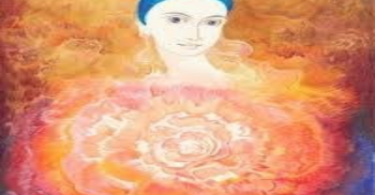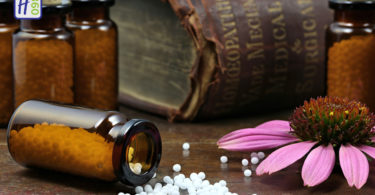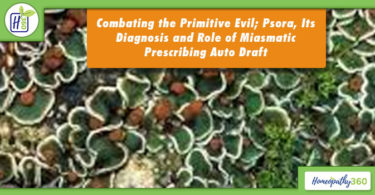Abstract: Each of us has certain triggers or situations to which we are highly sensitive and vulnerable and to which we are most likely to react. This is known as susceptibility and is an important factor for homoeopaths to consider, especially when prescribing at a constitutional level. A case has been shown over here which depicted an increased susceptibility on treatment with constitutional anti miasmatic medicine. Intercurrent remedy Tuberculinum was prescribed to hasten the process of cure.
Keywords: Susceptibility, idiosyncrasy, miasm, Tuberculinum.
Abbreviations: M: 1000 centesimal potency.
Introduction
We often hear someone telling that he is sensitive to cold, catches cold easily or get fever frequently. This speaks about the susceptibility of the individual. Susceptibility is considered as the state or fact of being likely or liable to be influenced or harmed by certain things. It is the vulnerability or sensitivity of an individual to get diseases. Susceptibility speaks about the defensive mechanism in the human body. It is the state of being predisposed to, sensitive to or of lacking the ability to resist a pathogen, familial disease or a drug. When there is susceptibility, that individual is easily affected, influenced or harmed by something. The general capability of the organism to receive impression or the power of the organism to react to stimuli is determined by susceptibility. It is one of the fundamental attributes of life. (1)
Epidemiology
In epidemiology a susceptible individual is a member of a population who is at risk of becoming infected by a disease if he or she is exposed to the infectious agent. (2) Multi factorial risk factors are responsible for many diseases. They can be broadly categorized as environmental, genetic and life style factors. Much attention has been focused on the first two categories, e.g. the identification of environmental toxicants/carcinogens and the elucidation of genetic susceptibility to disease. Life style risk factors such as aging, poor nutrition, infection and exposure to toxicants can also increase susceptibility to illnesses. These life style factors can therefore be considered to cause acquired susceptibility for increased risk for environmental disease. (3)
Homoeopathic approach
Dr Samuel Hahnemann, in §31 of Organon of Medicine, has stated that we are made ill only when our organism is sufficiently disposed and susceptible to the attack of the morbific cause that may be present, and to be altered in its health, deranged and made to undergo abnormal sensations and functions. In §73 of Organon of Medicine Master Hahnemann has stated that As regards acute diseases, which attack human beings individually, the exciting causes being injurious influences to which they were particularly exposed. Excesses in food, or an insufficient supply of it, severe physical impressions, chills, over heatings, dissipation, strains etc., or physical irritations, mental emotions, and the like, are exciting causes of such acute febrile affections; they are generally only a transient explosion of latent Psora, which spontaneously returns to its dormant state if the acute diseases were not of too violent a character and were soon quelled. Or they are of such a kind as attack several persons at the same time, here and there (sporadically), by means of meteoric or telluric influences and injurious agents, the susceptibility for being morbidly affected by which is possessed by only a few persons at one time. In §117 of Organon of Medicine we find mention of idiosyncrasies, which are peculiar corporeal constitutions which, although otherwise healthy, possess a disposition to be brought into a more or less morbid state by certain things which seem to produce no impression and no change in many other individuals. (4)
In Lectures on Homoeopathic Philosophy, Dr James Tyler Kent (Lecture no. XVIII) has stated that Psora is the underlying cause, and is the primitive or primary disorder of the human race. It is a disordered state of the internal economy of the human race. This state expresses itself in the forms of the varying chronic diseases, or chronic manifestations. If the human race had remained in a state of perfect order, Psora could not have existed. The susceptibility to Psora opens out a question altogether too broad to study among the sciences in a medical college. It is altogether too extensive, for it goes to the very primitive wrong of the human race, the very first sickness of the human race that is the spiritual sickness, from which first state the race progressed into what may be called the true susceptibility to Psora, which in turn laid the foundation for other diseases. (5)
In The Genius of Homoeopathy, Dr Stuart Close has stated that by susceptibility we mean the general quality or capability of the living organism of receiving impressions; the power to react to stimuli. Susceptibility is one of the fundamental attributes of life. Upon it depends all functioning, all vital processes, physiological and pathological. Digestion, assimilation, nutrition, repair, secretion, excretion, metabolism and catabolism, as well as all disease processes arising from infection or contagion depend upon the power of the organism to react to specific stimuli. We shall see that the kind and degree of reaction to medicines depends upon the degree of susceptibility of the patient, and this power to modify susceptibility is the basis of the art of the physician. If the physician knows how to modify susceptibility in such a way as to satisfy the requirements of the sick organism and bring about a true cure, then is he a physician indeed; since cure consists simply in satisfying the morbid susceptibility of the organism and putting an end to the influx of disease-producing causes. (6)
In The Principles and Art of Cure by Homoeopathy, Dr Herbert A Roberts has stated we may define susceptibility primarily as the reaction of the organism to external and internal influences. Human beings are susceptible to infection and contagion in varying degrees. One man will become infected in contact with diseased individuals while another will experience no ill effects whatever. One person is made ill by noxious plants while another man can handle them with impunity. Certain people are capable of making a wonderful proving of a drug, whereas others will show no reaction whatever. In analyzing susceptibility, we find it is very largely an expression of a vacuum in the individual. This is illustrated by the desire for food. The vacuum attracts and pulls for the things most needed, that are on the same plane of vibration as the want in the body. Susceptibility varies in degree in different patients, and at different times in the same patient. Homoeopathic application of a remedy is an illustration of meeting the susceptibility and filling the vacuum that is present in the sick individual. The proving of the remedy on a healthy individual gives us the basis of similarity of remedies to sick individuals because in a proving the remedy produces an artificial susceptibility similar to the susceptibility of the sick individual. The application of the homoeopathic remedy in sickness satisfies this natural susceptibility. No matter how little reaction of the remedy develops in the proving on a healthy individual, the susceptibility is greatly accentuated in sickness. In sickness it is essential to remember that it is only in the administration of the similar remedy that susceptibility is satisfied. The similar remedy, or the similar disease, satisfies susceptibility and establishes immunity. (7)
In Essentials of Principles and Practice of Homoeopathy, Dr S P Dey has stated that susceptibility is the capacity or quality of the living organism to react against stimulus. That we remain in living condition is the best proof of susceptibility. There is no susceptibility in the dead and so a dead person does not react to any stimulus. By birth we possess a hereditary dyscrasia and a general adoptability. The combination of these two constitutes susceptibility. This susceptibility is modified to a great extent under various circumstances after birth e.g. environment, sickness, rules of hygiene, mode of living, occupation etc. A person becomes easily vulnerable to such diseases to the causative factors of which he is more susceptible. The greatest utility of susceptibility in homoeopathy is the selection of the appropriate potency. The more the susceptibility the higher should be the potency. Susceptibility of children is usually more than that of adults. The susceptibility of a patient of chronic disease gradually diminishes as a result of long suffering. The susceptibility also diminishes in cases of diseases affecting vital organs like heart, lungs, liver, kidneys etc. The susceptibility may not be affected by the very first stimulus, but if the same stimulus is repeated, the susceptibility may increase. (8)
Dr S K Banerjea, in Miasmatic Prescribing, has explained susceptibility to be vulnerability as opposed to resistance. There is vulnerability to the influences of life processes which is inevitable. Within the inevitable life cycle there is susceptibility to other influences. One such influence is Psora. Due to its highly infectious nature, any life form (in this case human) will become infected with Psora, increasing the vulnerability and influences including emotional, environmental and disease. (9)
Dr George Vithoulkas, in The Science of Homoeopathy, has mentioned that the susceptibility of a given person tends to vary within a narrow spectrum of illnesses. Throughout life a particular individual remains on a certain level of susceptibility unless a major influence produces a jump in levels; even then the organism will remain on the new level unless treated by homoeopathy. Within a certain range of diseases, a person will vary according to such factors as the amount of sleep he gets, nutrition, sanitation, the degree of stress in his life etc. but he will be unable to make changes from one level to another on his own. (10)
In Kent’s Repertory we find mention of susceptibility to catch cold:
GENERALS – COLD – tendency to take (highest grade)
Acon. Alum. Bar-c. Bry. Calc-p. Cham. Dulc. Hep. Kali-c. Kali-p. Lyc. Merc. Nat-a. Nat-m. Nit-ac. Nux-v. Psor. Rumx. Sep. Sil. Tub. (11)
Case study
A case report has been presented to illustrate the significance of susceptibility in homoeopathic prescribing. (Taken from Clinical Case Reports on Constitutional Prescribing by Dr S P Dey) 12
An unmarried girl aged 23 years consulted Dr S P Dey on 26.09.1980 for treatment of fibro- adenoma of right breast, about the size of a big orange or even more.
Presenting complaints
1. Stony hard swelling in the right breast for more than two years but the patient wanted medical advice just one year back when she was diagnosed as a case of fibro-adenoma of right breast.
2. Backache occasionally, no definite modality, rather aggravated at rest.
3. Occasional pain in different joints.
4. Menses: regular but scanty, lasting only for three days.
5. Falling of hair: ++ for last six months.
Past history
Appendicitis operated three/four years back.
Family history
Nothing contributory.
Mental picture
Irritable, hasty, fond of music, fear of dogs.
Physical generals
1. Hot patient; wanted cold in all seasons.
2. Profuse sweating which produced no effect on the patient.
3. Desire: meat, salt and chillies.
4. Burning of palms and soles ameliorated by applying cold water.
5. Sleep: sound, always preferred to lie in knee-chest position.
6. Thirst: profuse even at night.
Clinical findings
Stony hard swelling of right breast, almost covering the whole of breast, especially the upper portion. Swelling felt hot to touch; freely mobile.
General physical examination
Slim, tall and fair looking.
Case analysis with medicine selection
History of appendicitis, tendency to overgrowth at such an early age with predominance of rheumatic diathesis since childhood strongly pointed to Sycosis as being the miasmatic state inherited. The totality and the miasmatic background clearly suggested the remedy. Author preferred higher and highest potency to remove the hereditary miasmatic dyscrasia provided there was less chance of aggravation and metamorphosis.
Prescription (Rx)
Medorrhinum 10M, one dose only.
Follow up
17.12.1980 Growth softer and reduced in size. The patient felt very very hot. The pain in limbs and back was ameliorated but the nape of neck was aching. She was having frequent attacks of cold and catarrh of cold after Medorrhinum. Tuberculinum 1M, one dose only. Medorrhinum made a satisfactory progress including the growth but increased susceptibility of being attacked with cold indicated flaring up of latent Psora. Tuberculinum covered the mental makeup and her physical appearance.
14.08.1981 Patient had been progressively improving. Growth was very much reduced in size but for the last one month the progress had come to a standstill condition. Medorrhinum 10M, one dose only (plus system) Tuberculinum hastened up the progress of treatment, Medorrhinum was again given which was her constitutional anti miasmatic medicine.
25.09.1981 Growth was reduced by more than 75%. Menstruation had improved in quantity and colour lasted for four or five days. No complaints whatsoever. Placebo –
28.12.1981 Growth reduced by about 90%. Small growth about the size of pea nut was still persisting and was very much softer in consistency. Placebo Progress favourable, complete resolution of the growth was expected within few more months.
N.B. The case presented signifies the importance of susceptibility in homoeopathic prescribing. Constitutional medicine helped in bringing forth the latent miasm and treatment was directed accordingly. Interpretation of the symptomatological variations was made according to author’s views. Laboratory reports were unavailable which could have further corroborated the pre-post pathological variations.
Conclusion
Susceptibilty has got wider significance in homoeopathy, in understanding the miasmatic dyscrasia of the individual as well as in prescribing medicine, being with whatever complaints the patient may present with. Individualizing examination of a case of disease is of prime importance in finding out the picture of the disease process which will help in selection of the indicated medicine as well as asking the patient to avoid the factors which could trigger the presenting complaints.
References
1. Das E. Susceptibility. National Health Portal [Internet]. Last Update: June 23, 2016. Available on: https://www.nhp.gov.in/susceptibility_mtl
2. A set of training materials for professionals working in intervention epidemiology, public health microbiology and infection control and hospital hygiene. Field Epidemiology Manual [Internet]. [Cited on 2019-06-02]. Available on:
3. Au WW. Life style factors and acquired susceptibility to environmental disease. Int J Hyg Environ Health. 2001 Oct; 204(1):17-22. PMID: 11725340. DOI: 10.1078/1438-4639-00067.
4. Singh M, Singh S. First Corrected, re-translated & redacted edition of Organon of Medicine with word meanings below each aphorisms 6th & 5th editions by Samuel Hahnemann. 2nd ed. Kolkata: Homoeopathic Publications; 2015.p.144, 199, 239.
5. Kent JT. Lectures on Homoeopathic Philosophy. Reprint ed., New Delhi: Indian Books & Periodicals Publishers. 2000.p.114.
6. Close S. The Genius of Homoeopathy. Reprint ed., New Delhi: Indian Books & Periodicals Publishers. 2001.p.76-7.
7. Roberts HA. The Principles and Art of Cure by Homoeopathy A Modern Textbook. New Delhi: Indian Books & Periodicals Publishers; 1936. p.157, 150-6.
8. Dey SP. Essentials of Principles and Practice of Homoeopathy. 4th ed., Howrah: Aparna Bhattacharya; 2009.p.78-80.
9. Banerjea SK. Miasmatic Prescribing – Its Philosophy, Diagnostic Classification, Clinical Tips, Miasmatic Repertory, Miasmatic Weightage of Medicines and Case Illustrations.2nd Extended Indian ed., New Delhi: B. Jain Publishers (P) Ltd.; 2010. p.37.
10. Vithoulkas G. The Science of Homeopathy. Indian ed., New Delhi: B. Jain Publishers Pvt. Ltd.; 1998. p.120.
11. Kent JT. Repertory of the Homoeopathic Materia Medica. 4th ed., Calcutta: Economic Homoeo Pharmacy; 1982.p.1349.
12. Dey SP. Clinical Case Reports on Constitutional Prescribing. 1st ed., Calcutta: New Nirala Press; 1982.p.103-5.
About the authors:
Dr Arunava Nath and Dr Syed Afsar Ali





